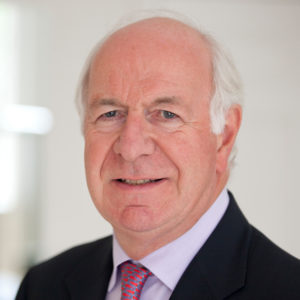medwireNews: The benefit of initiating recombinant human growth hormone (rhGH) before puberty in patients with Noonan syndrome (NS) occurs regardless of whether the children carry a PTPN11 mutation, suggests research published in Endocrine Connections.
rhGH therapy is approved for NS by both the US Food and Drug Administration and the European Medicines Agency but the impact of the PTPN11 mutation on the long-term outcomes of rhGH in this patient population is unknown, explain Reiko Horikawa (National Centre for Child Health and Development, Tokyo, Japan) and co-workers.
To investigate further, they pooled information from the American Norditropin Studies program and the randomised GHLIQUID-4020 clinical trial for 109 children who had used rhGH and had a documented PTPN11 mutation status.
They focused on a treatment effectiveness subgroup of 69 patients who were prepubertal and naïve to rhGH therapy at baseline, of whom 71% were positive for PTPN11 mutations. Of the 20 patients without a PTPN11 mutation, nine had another gene mutation related to their NS diagnosis, most commonly RAF1 (n=3) or SOS1 (n=2).
These patients with and without PTPN11 alterations were “generally similar” and did not significantly differ in baseline characteristics, the researchers say, with a mean age at rhGH initiation of 6.4 years in both groups, and around 30% of both groups were female. The patients with and without PTPN11 mutations also had a similar number of cardiovascular abnormalities.
Patients with PTPN11 mutations received an average rhGH dose at baseline of 0.047 mg/kg per day versus 0.054 mg/kg per day for those without a mutation, and 42.9% and 50.0% of the groups, respectively, reached puberty over the 4 years of follow-up.
When compared with the general population, the average height standard deviation-score (HSDS) at baseline in the children with and without PTPN11 mutations was –3.0 and –3.1, respectively, and after 4 years of rhGH therapy, the average HSDSs were a corresponding–1.9 and –1.7.
And when using NS-specific reference data, the children with and without PTPN11 mutations continued to have statistically similar HSDS scores at both baseline (–0.5 vs –0.6) and after treatment (+0.6 and +0.8).
However, the children with and without PTPN11 mutations did significantly differ in their baseline average BMI SDS, at –0.64 versus +0.03. This pattern continued after 4 years of rhGH therapy (–0.69 vs +0.94), although the groups did not differ in the average change in BMI SDS from baseline (–0.02 vs –0.04).
In addition, the investigators assessed the relationship between insulin-like growth factor (IGF)-1 and PTPN11 status in 46 patients who took part in the clinical trial, finding that the IGF-1 levels stayed within normal range for children with and without PTPN11 mutations.
“Further studies are required to better understand growth failure in NS patients and the functional relationship between the various NS genotypes, GH sensitivity, and IGF-I signalling”, observe Horikawa and co-authors.
They note that “patient adherence to rhGH and other factors that may affect IGF-I levels, for example, individual GH sensitivity, long-term fasting, and nutrition, were not assessed in this analysis and, therefore, this topic may require further investigation.”
Safety assessment of the full analysis population showed that adverse events occurred in 34.9% of patients, most commonly headache (n=5) and arthralgia (n=3). One 14-year-old boy without a PTPN11 mutation experienced atrial fibrillation and two patients with PTPN11 mutations developed neoplasms.
“GH [therapy] over 4 years resulted in improved growth outcomes in GH treatment-naïve, pre-pubertal NS patients, irrespective of PTPN11 mutation status”, the team concludes.
However, the authors note that the study has several limitations, including the small patient numbers, the difference in the size of the PTPN11-positive and -negative cohort sizes, the differing impact of the mutations in the latter group, and incomplete follow-up until final height was reached.
Nevertheless, they conclude: “The long-term safety data are reassuring regarding the safety of GH [therapy] in this population, consistent with previous reports.”
By Lynda Williams
medwireNews is an independent medical news service provided by Springer Healthcare Ltd. © 2022 Springer Healthcare Ltd, part of the Springer Nature Group


